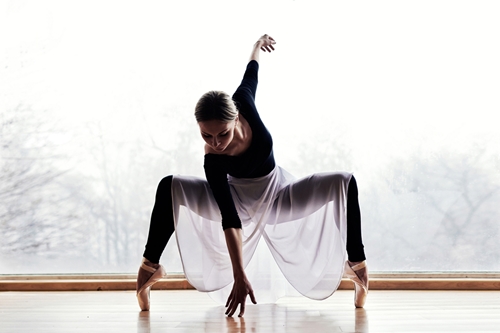Most dance classes are filled with structured lessons about different skills, techniques, tricks and combinations. After all, these are the aspects that make up a great performance. However, you may want to consider incorporating a little bit of dance improvisation into your classes – even if your students balk when you mention it.
“Almost every student I’ve ever had has been terrified,” Chloe Arnold, director of DC Tap Fest and her company, Syncopated Ladies, told Dance Teacher magazine. “[Improvisation] is scary, but once you give it a try, you realize it’s the best thing that ever happened.”
Here are five noteworthy benefits of taking a less-than-structured approach to dance class.
1. Boost Confidence
If your students are only comfortable in predetermined steps and combinations, they’ll likely be insecure when it comes to improvisation. However, pushing through this fear and letting their bodies guide them can often serve as a huge confidence-booster. Improv exercises can also help alleviate fears that your dancers may have about making mistakes. When they’re making up steps on the fly, there’s no “right” and “wrong.” Instead, it’s just about being confident and creative while having fun.
2. Encourage Self-Discovery
Sometimes stepping outside of their comfort zones can help students discover who they are as performers. It’s impossible for dancers to grow if they’re constantly held inside a box, so encourage your performers to spread their wings. Maybe a few improvisation sessions will inspire your students to take up choreography or pursue a few classes in modern dance. When students aren’t solely focused on learning your steps, their minds will be open to all the possibilities that dance offers them.
3. Improve Musicality
It can be hard to teach dancers about musicality, as the skill is multi-faceted and complicated to explain. However, when words are failing you, sometimes a little improvisation can help demonstrate what this quality is all about. Incorporate free-style dance into your lessons about musicality. Have your dancers feel the music and let it guide their steps. It may seem awkward at first, but encourage your students to take it seriously – no giggling – and soon they’ll understand what you mean about connecting their movements with the music.
4. Aid Performance Recovery
There are times in every performer’s career when she misses a step or falls during a trick. These moments are embarrassing for any level of dancer, but what sets the pros apart from the beginners is how they recover. Many times young performers will freeze after making a mistake. The Dance In Progress blog explained that working on improv can often help dancers recover from mid-performance mishaps more quickly. When they’re used to going with the flow, they’ll be able to turn a trip into a graceful turn, then get right back into performance. Many times, the audience won’t even notice the misstep if the dancer recovers fluidly.
5. Inspire Choreography
Choreographer’s block is all too real, and sometimes you might find that your recital pieces are a bit lackluster. When this happens, you may be able to break free of your inspiration rut with a fun, free-flowing inprov session. Let your dancers have a free eight count in spots where you can’t find appropriate steps, and see what they come up with. Your students may lend that bit of creativity and passion the piece was missing. For older students, you can even hold a light-hearted competition to see which dancer or team can come up with the best opening sequence.
As you can see, both dance teachers and students can benefit from incorporating improvisation into practice. It helps everyone to think outside the box and continue growing as performers.



